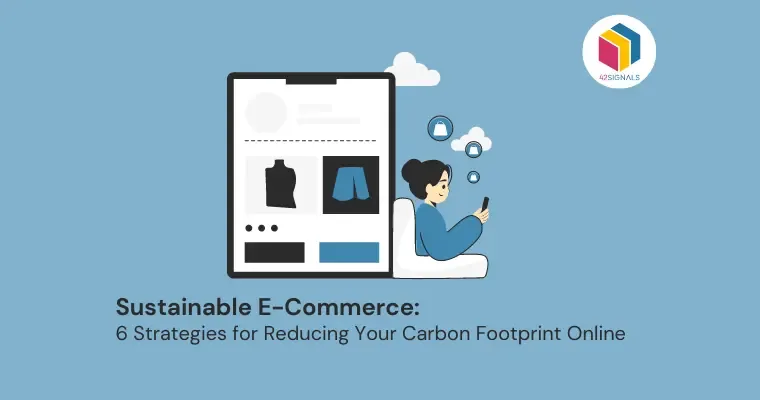Imagine walking down the aisle of a supermarket in the pre-ecommerce era, picking up products from brands like Tide, Dove, and Nescafé. These familiar names were all part of the portfolios of traditional House of Brands companies like Procter & Gamble, Unilever, and Nestlé. These companies built their empires by managing a diverse range of distinct brands, catering to various market segments through mass marketing, and leveraging their vast distribution networks.
Now, fast forward to the digital age. The evolution of House of Brands is changing with technology and the emergence of alternative ways of doing commerce. A new breed of House of Brands companies has emerged, driven by the rapid growth of e-commerce and the rise of platforms like Amazon, including Thrasio, Perch, SellerX, India’s Mensa Brands, and many more.
In simple terms, a House of Brands (HoB) refers to a company that owns and manages a diverse portfolio of individual brands, each targeting different customer segments and operating relatively independently.
In this article, we’ll delve into House of Brands companies and the innovative strategies they adopt to scale their brands in the current omnichannel environment. We will explore how these new-age companies differ from traditional House of Brands companies and examine their unique approach to acquiring, operating, and scaling online businesses.
Evolution of House of Brand companies
Over the years, House of Brands companies have evolved significantly, adapting to changes in consumer preferences, market trends, and technological advancements.
The Rise of Traditional House of Brands Companies
In the 20th century, traditional House of Brands companies like Procter & Gamble, Unilever, and Nestlé emerged as dominant players in the market. These companies focused on creating a diverse portfolio of brands, each targeting specific customer segments and needs. Their strategies included mass marketing, extensive distribution networks, and product innovation to drive growth and establish a strong presence in various categories.
Adaptation to the Digital Age
With the advent of the internet, digital technology and e-commerce, traditional House of Brands companies recognized the need to adapt their strategies to stay relevant. They began investing in digital marketing, social media, e-commerce, and data analytics to understand better and engage with customers. This shift marked the beginning of the transformation of House of Brands companies as they embraced the digital world.
Emergence of New Age House of Brands Companies
The rapid growth of e-commerce platforms like Amazon gave rise to a new breed of House of Brands companies, such as Thrasio, Perch, and SellerX. These companies focus on acquiring, operating, and scaling online businesses, primarily within the e-commerce space. By leveraging data-driven strategies, they identify high-potential brands and optimize their operations, marketing, and supply chain management to fuel growth and profitability.
Global Expansion and Diversification
As the House of Brands model continued to evolve, companies like India’s Mensa Brands emerged, showcasing the global nature of this trend. These new-age companies are expanding their reach beyond their local markets, acquiring and scaling brands in various regions and categories, and adapting their strategies to cater to diverse customer preferences and cultural nuances.
Omni-Channel Approach and Customer-Centricity
The latest phase of evolution for House of Brands companies involves adopting an omnichannel approach and focusing on customer-centric strategies. As consumers increasingly shop across various channels, both online and offline, House of Brands companies must ensure a seamless and consistent customer experience. This includes personalization, targeted marketing, and a deep understanding of customer preferences and behavior to drive loyalty and long-term value.
What makes them ‘Tick’
House of Brands companies have several factors working in their favor that contribute to their success and competitive advantage in the marketplace. Some of these key factors include:
Diversification
One of the main strengths of House of Brands companies lies in their diverse portfolio of brands. By catering to various customer segments and needs, these companies can reduce the risk associated with the failure of a single brand and expand their market reach. Diversification allows them to be more resilient in the face of changing market dynamics and consumer preferences, ensuring long-term stability and growth.
Cross-brand synergies
House of Brands companies can benefit from cross-brand synergies within their portfolio. By sharing resources, expertise, and best practices across brands, these companies can create efficiencies and drive innovation. For instance, successful marketing campaigns or product development strategies from one brand can be adapted and implemented by others within the portfolio, leading to overall improvements in performance and competitiveness.
Economies of scale
Owning and operating multiple brands allows House of Brands companies to achieve economies of scale. They can negotiate better deals with suppliers, streamline operations, and share resources such as distribution networks, marketing, and research and development efforts. These cost savings and operational efficiencies can enhance the profitability and growth potential of their brands.
Digital-first brands
The rise of e-commerce has democratized distribution and created new opportunities for House of Brands companies to scale their digital-first brands rapidly. By leveraging digital platforms and online channels, these companies can reach a global audience and effectively compete with established players in their respective industries. Digital-first brands can benefit from lower overhead costs, data-driven marketing strategies, and agile supply chains, making them well-positioned to capitalize on the growth of e-commerce and online retail.
Growth Strategies House of brands adopt
House of Brands companies employ several strategies to scale their operations, grow their market presence, and enhance profitability. Some of the key strategies they adopt include:
| Strategy | Description |
| Acquisitions & Partnerships | Expands portfolio, taps into new market segments, and leverages synergies between acquired/partnered brands and existing portfolio. |
| Product Innovation & Line Extensions | Invests in product innovation and introduces new products/line extensions to cater to evolving customer needs, expand offerings, and keep brands fresh and relevant. |
| Market Expansion & International Growth | Expands presence in new markets/regions, both domestically and internationally, adapting products and marketing strategies to local preferences and cultural nuances. |
| Leveraging Data & Analytics | Uses advanced analytics to gain insights into customer behavior, preferences, and market trends, enabling informed decisions about product development, marketing strategies, and operational improvements. |
| Digital Marketing & E-commerce Optimization | Invests in digital marketing, social media engagement, and e-commerce optimization to boost brand visibility, drive online sales, and connect with customers more effectively. |
| Supply Chain & Operational Efficiencies | Streamlines processes, optimizes inventory management, and implements technologies to enhance productivity and reduce costs, increasing overall profitability. |
HoB companies are rapidly evolving as they navigate the competitive and ever-changing business landscape. Adapting to new trends, technologies, and customer preferences, these companies are continuously transforming their strategies to stay ahead of the curve.
Stay tuned for part two of ourseries, where we will explore how the HoB landscape is shaping up in India and the implications for businesses and consumers alike.





